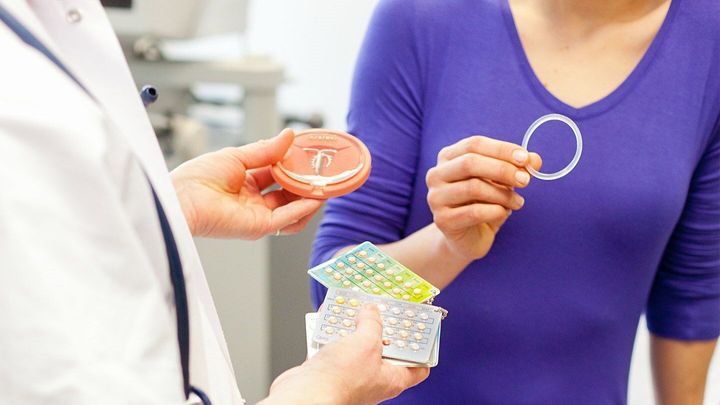Let's Talk Birth Control: Part Two
Mar 25, 2021
Let’s Talk Birth Control: Part Two
Did you know that if you are sexually active and not using birth control, you’re about 85% likely to become pregnant within a year? Choosing the right birth control method can be overwhelming but it is important to be familiar with all of your options. If you are interested in a long-acting reversible method of contraception (LARC) like Nexplanon or an IUD, then please reference “Let’s Talk Birth Control: Part One”. If you are interested in an alternative method, we will discuss your options below.
Short-Term Options: the Pill, the Patch, and the Ring
The Pill: There are two types of pill: combined and progestin-only. Combined pills release two hormones into your body, estrogen and progestin (the man-made form of progesterone). There are several types of combined pills and your doctor will help decide which one is best for you. Most combined pills have three weeks of “active pills” or pills that contain hormone, followed by one week of a “placebo pill”, often called “sugar pills”. Most progestin-only pill packs have one continuous hormone and do not have a placebo week. The combined pill needs to be taken around the same time every day for it to be effective and progestin-only pills must be taken at the same time every day to be effective.
The Patch: The patch contains both estrogen and progesterone. You apply the patch to your lower abdomen, buttocks, outer arm, or upper body and replace it once a week for three weeks. On the fourth week, you don’t apply a patch and you have your period. Two types of patch include: Xulane and Twirla. The patch may be less effective if you weigh more than 198 lbs or have a BMI greater than 30.
The Ring: A small, flexible ring that you insert into your vagina once a month. You leave the ring in for 3 weeks and then insert a new ring after 7 days. This ring is called Nuvaring. If you don’t want to insert a new ring every month, there is a new type of vaginal ring called Annovera that is good for one year. Paired with an app on your phone, you leave the ring in for 3 weeks and then insert the same ring after 7 days. You don’t have to take out either ring out to have sex. But if you do, or it falls out, put it back within 3 hours. If it’s out for longer, you should use a back-up method of birth control.
Barrier Methods:
Diaphragm: A shallow cup shaped like a saucer that is made of silicone. You bend it in half and insert it inside your vagina to cover your cervix, which prevents sperm from joining an egg. It should be used in combination with spermicide to work best. The diaphragm is 88% effective and used every time.
Cervical Cap: A little cup made from silicone that is shaped like a sailor’s hat. You put it deep inside your vagina to cover your cervix, which helps prevent sperm from joining an egg. It should be used in combination with spermicide to work best. The type of cervical cap that you can find in the U.S. is called FemCap. The cervical cap is 71-86% effective and is used every time.
The Sponge: A small, round sponge made from soft, squishy plastic that you put deep in your vagina before sex. The sponge covers your cervix and contains spermicide to help prevent pregnancy. The only sponge that is available in the U.S. is called the Today Sponge. The sponge is 76-88% effective and is used every time.
Vaginal Contraceptive Gel: A prescription gel that you insert into your vagina before you have sex to prevent sperm from meeting with an egg. The gel works by stabilizing the vaginal pH during sex to lower sperm mobility. The available contraceptive gel is called Phexxi. Phexxi is 93% effective when used every time.
Condoms: Male condoms fit over a man’s penis, while female condoms are inserted into your vagina. Male condoms are the most effective way to prevent sexually transmitted infections.
I am breastfeeding, what options are best for me?
Some forms of birth control can increase your risk of blood clot immediately postpartum and decrease milk supply. If you are breastfeeding, the best options for you include a progestin-only pill or an IUD.
Does birth control have other benefits?
While most women use birth control to prevent pregnancy, there are several added benefits! Birth control can:
- Lower your risk of uterine and ovarian cancer
- Lower your risk of pelvic inflammatory disease (PID), ovarian cysts, and anemia
- Help control acne
- Reduce unwanted hair growth
- Shorten your period, reduce how much you bleed, and make your cycle more regular
- Reduce menstrual cramps and headaches
- Improve bleeding and symptoms of perimenopause
Who is not a candidate for birth control?
You shouldn’t use birth control that contains estrogen if you have migraine with aura, you’re a smoker over the age of 35, or you’re at risk of blood clots or cardiovascular disease. If you have a history of lupus, breast cancer, or other chronic illnesses, you should talk to your doctor about the safest form of birth control for you.
Does birth control protect me from STD?
No! Condoms are the only form of birth control that also protect against sexually transmitted infection.
I know which birth control option is right for me, now what?
Make an appointment with your healthcare provider to make sure the method you’ve chosen is right for you!
Written by Emily Miller-Dawson, NP
Emily is a Colorado native and joined Red Rocks OB/GYN (a member of OB/GYN Affiliates) in July of 2020. She began her medical career as a CNA in 2010 and worked with post-operative spine patients. She earned her undergraduate degree from Denver College of Nursing in 2013 and transitioned into a nursing role in the Emergency Department at Swedish Medical Center, where she spent the majority of her nursing career. She then earned her Master's degree at Walden University and became a board-certified Family Nurse Practitioner. Emily is passionate about supporting women and enjoys being part of their preventive health and obstetrical care. She has participated in multiple medical mission trips to Haiti and Cambodia. Emily enjoys spending time with her husband and fur babies. She loves travel, champagne, plants, and live music. Schedule an appointment with Emily by visiting http://www.redrocksobgyn.com/

